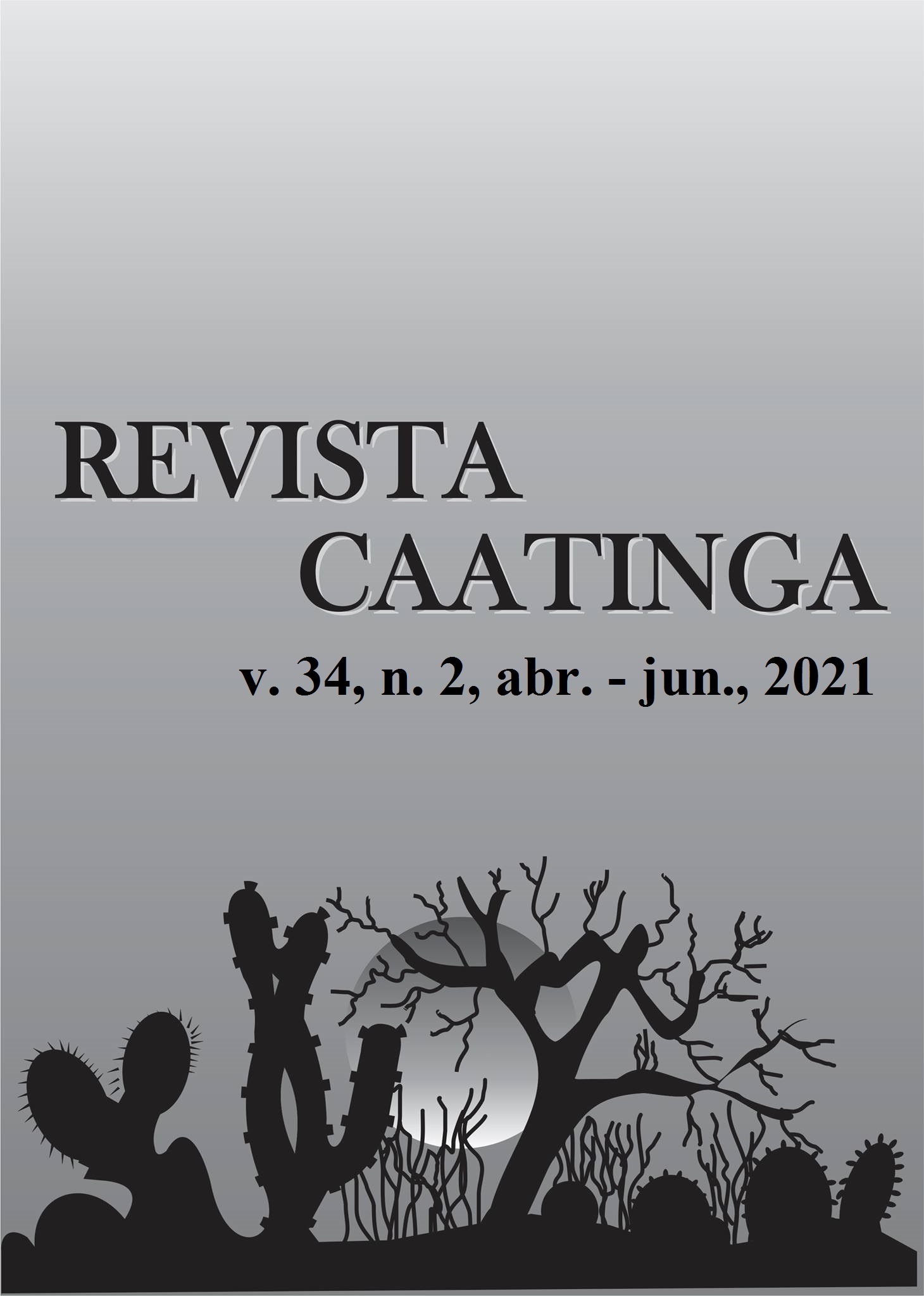DECISION TREE AS A TOOL IN THE CLASSIFICATION OF LIMA BEAN ACCESSIONS
DOI:
https://doi.org/10.1590/1983-21252021v34n223rcKeywords:
Phaseolus lunatus L. Machine learning. Computational intelligence. Multivariate methods.Abstract
Morpho-agronomic characterization studies aiming at the discrimination and classification of lima bean accessions in relation to the centers of domestication and biological status have been of great importance for conserving the biodiversity of this species. For this purpose, researchers have widely used the multivariate analysis called discriminant analysis, which is not always capable of producing satisfactory results. Computational intelligence-based classifiers are additional tools for understanding complex classification problems. In this study, the objective was to test the use of the decision tree in the classification of lima bean according to the centers of domestication and biological status (cultivated and wild), based on eight phenotypic traits of the seed. Sixty accessions of lima bean from the Phaseolus Germplasm Bank of Universidade Federal do Piauí (BGP / UFPI) were evaluated, and classification was performed using two approaches: conventional statistics with discriminant analysis of principal components (DAPC) and computational intelligence through decision tree (DT). The results showed that the use of DT was efficient to identify patterns in the classification of lima bean accessions, due to its comprehensibility. Seed weight was one of the main descriptors used to explain the origin and diversity of the species. The results found will be useful for studies that involve the conservation of genetic resources, mainly for the maintenance of germplasm banks and in breeding programs. In addition, it is recommended to integrate machine learning algorithms in studies aimed at classifying lima bean.
Downloads
References
ASSUNÇÃO-NETO, W. V. et al. Genetic diversity in Phaseolus lunatus L. based on morphological seed characters. Annual Report of the Bean Improvement Cooperative, 61: 199-200, 2018.
BAUDET, J. C. The taxonomic status of the cultivated types of lima bean (Phaseolus lunatus L.). Tropical Grain Legume, 7: 29-30, 1977.
BAUDOIN, J. P. et al. Ecogeography, demography, diversity and conservation of Phaseolus lunatus L. in the Central Valley of Costa Rica. Systematic and Ecogeographic Studies on Crop Genepools 12, Rome, Italy: International Plant Genetic Resources Institute, 2004. 85 p.
BREIMAN, L. et al. Classification and regression trees. 1. ed. Belmont, CA: WADSWORTH, 1984. 358 p.
CHACÓN-SÁNCHEZ, M. I.; MARTÍNEZ-CASTILLO, J. Testing Domestication Scenarios of Lima Bean (Phaseolus lunatus L.) in Mesoamerica: Insights from Genome-Wide Genetic Markers. Frontiers in Plant Science, 8: 1-20, 2017.
CRUZ, C. D.; REGAZZI, A. J.; CARNEIRO, P. C. S. Modelos biométricos aplicados ao melhoramento genético. vol. 2. 3 ed. Viçosa, MG: UFV, 2014. 668 p.
GUTIÉRREZ-SALGADO, A.; GEPTS, P.; DEBOUCK, D. G. Evidence for two gene pools of the Lima bean, Phaseolus lunatus L., in the Americas. Genetic Resources and Crop Evolution, 42: 15-28, 1995.
IPGRI. Descritores para Phaseolus lunatus (feijão-espadinho). International Plant Genetic Resources Institute, Bioversity Technical Bulletin Series. Rome: Bioversity International. 2001. 51 p.
JOMBART, T.; AHMED, I. adegenet 1.3-1: New tools for the analysis of genome-wide SNP data. Bioinformatics, 27: 3070-3071, 2011.
LIAKOS, K. G. et al. Machine learning in agriculture: a review. Sensors, 18: 2674-2703, 2018.
MILBORROW, S. rpart.plot: plot “rpart” models: an enhanced version of “plot.rpart”, R package version 3.0.8. 2019. Disponível em: <https://cran.r-project.org/package=rpart.plot>. Acesso em: 04 dez. 2019.
MONTERO-ROJAS, M. et al. Genetic, morphological and cyanogen content evaluation of a new collection of Caribbean Lima bean (Phaseolus lunatus L.) landraces. Genetic Resources and Crop Evolution, 60: 2241-2252, 2013.
MOTTA-ALDANA, J. R. et al. Multiple Origins of Lima Bean Landraces in the Americas: Evidence from Chloroplast and Nuclear DNA Polymorphisms. Crop Science, 50: 1773-1787, 2010.
NOGUEIRA, A. P. O. et al. Novas características para diferenciação de cultivares de soja pela análise discriminante. Ciencia Rural, 38: 2427-2433, 2008.
PILTAVER, R. et al. What makes classification trees comprehensible? Expert Systems With Applications, 62: 333-346, 2016.
R DEVELOPMENT CORE TEAM. R: a language and environment for statistical computing. Vienna: R Foundation for Statistical Computing, 2018.
SANT’ANNA, I. C. et al. RNA - Aplicações em estudos classificatórios. In: CRUZ, Cosme Damião; NASCIMENTO, Moysés. (Eds.). Inteligência computacional aplicada ao melhoramento genético. 1. ed. Viçosa: UFV, 2018. cap. 7. p. 189-214.
SILVA, R. N. O. et al. Phenotypic diversity in lima bean landraces cultivated in Brazil, using the Ward-MLM strategy. Chilean Journal of Agricultural Research, 77: 35-40, 2017.
TANABATA, T. et al. SmartGrain: High-throughput phenotyping software for measuring seed shape through image analysis. Plant Physiology, 160: 1871-1880, 2012.
THERNEAU, T.; ATKINSON, B. rpart: Recursive partitioning and regression trees, R package version 4.1-15. 2019. Disponível em: <https://cran.r-project.org/package=rpart>. Acesso em: 04 dez. 2019.
TRABELSI, A.; ELOUEDI, Z.; LEFEVRE, E. Decision tree classifiers for evidential attribute values and class labels. Fuzzy Sets and Systems, 366: 46-62, 2019.
Downloads
Published
Issue
Section
License
Os Autores que publicam na Revista Caatinga concordam com os seguintes termos:
a) Os Autores mantêm os direitos autorais e concedem à revista o direito de primeira publicação, com o trabalho simultaneamente licenciado sob a Licença Creative Commons do tipo atribuição CC-BY, para todo o conteúdo do periódico, exceto onde estiver identificado, que permite o compartilhamento do trabalho com reconhecimento da autoria e publicação inicial nesta revista, sem fins comerciais.
b) Os Autores têm autorização para distribuição não-exclusiva da versão do trabalho publicada nesta revista (ex.: publicar em repositório institucional ou como capítulo de livro), com reconhecimento de autoria e publicação inicial nesta revista.
c) Os Autores têm permissão e são estimulados a publicar e distribuir seu trabalho online (ex.: em repositórios institucionais ou na sua página pessoal) a qualquer ponto antes ou durante o processo editorial, já que isso pode gerar alterações produtivas, bem como aumentar o impacto e a citação do trabalho publicado (Veja O Efeito do Acesso Livre).







